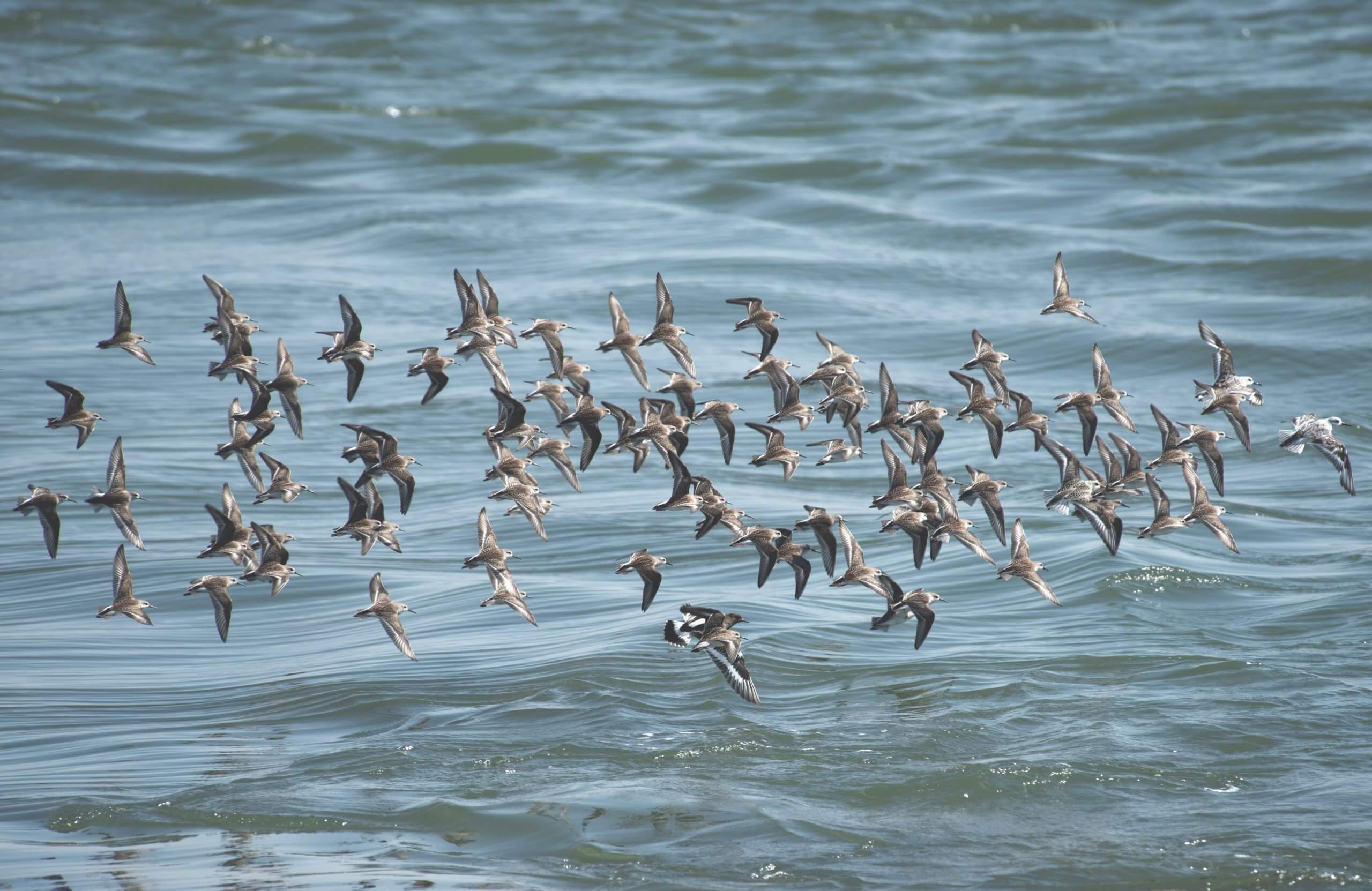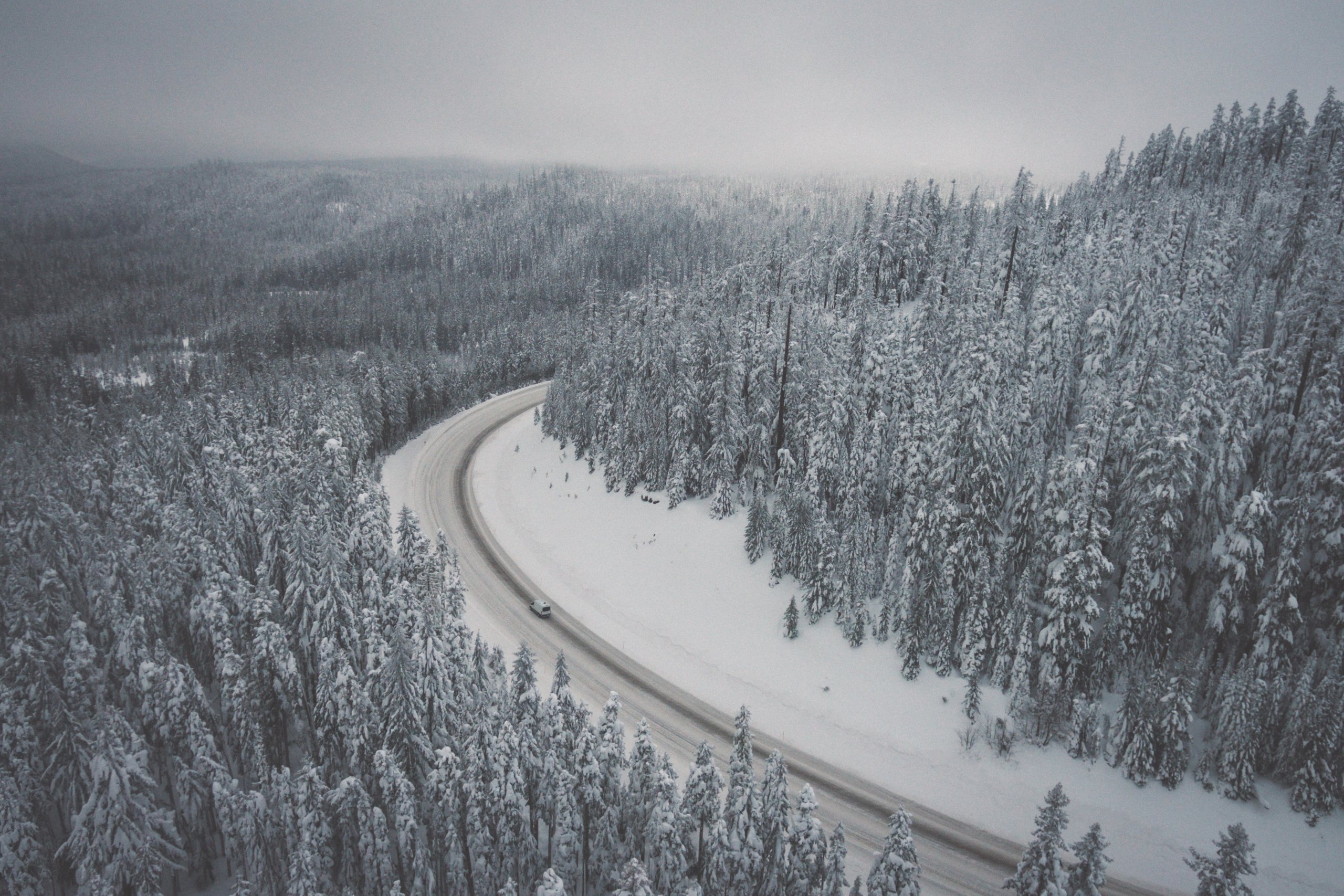By Nancy Baron. Published Feb. 27, 2015
Categories: Announcements, Leadership
Tags: coaching, community, convening, fellowship, goals, inspiration, land, training, Wilburforce, workshop
The New Year is a time for thinking about “What do you want to do with your one wild and precious life?” (Mary Oliver). The first week of January, I spent a few days in Yosemite with my husband, environmental writer Ken Weiss, reflecting on our dreams and how to best spend our time in 2015.
Tents that Caldwell and Jorgenson called “home” during the 19-day ascent. Photo by Nancy Baron.
Our trip just happened to coincide with the seemingly impossible realization of a seven-year dream—the free climb of El Capitan by Tommy Caldwell and Kevin Jorgenson. Each morning, before we set out for cross-country skiing, we stopped at the meadow below El Cap to watch their progress. Through my binoculars (typically used for birds, not climbers) we could see the tiny tents where they rested during the day, dangling high above Yosemite Valley, anchored to the rock face. Ropes showed where they had been, but not where they were going. They relied on barely perceivable cracks and ledges to make their way. Every move was calculated and premeditated, using only fingers and feet – and tremendous concentration—to inch upwards.
For 7 years, they had prepared for this climb: developing their strategy, choreographing each pitch, planning every move, as well as the logistics of living for weeks suspended on a rock wall. The climb, and ultimately their success, came down to breaking a huge and seemingly impossible task into manageable pieces. In a post from 2013, Tommy Caldwell described how the immensity of the challenge was so overwhelming, that “Instead I have to think smaller . . . I imagine dancing between them [the pitches] in choreographed sequences I’ve spent years struggling to perfect, struggling to link together the 3,000 feet of white granite.”
Caldwell describes lying awake “formulating logistical strategies,” and focusing on this project. Importantly, he and his climbing partner Kevin Jorgenson had a support team of family, friends and colleagues who believed in them, despite the dubious odds of achieving their goal. In the end, he said, “I’ve come to see that the Dawn Wall’s true gift to me is the pursuit itself: Would my world feel as rich without this project?”
On my mind as I contemplated this year, and this climb, was the new Wilburforce Fellowship in Conservation Science that COMPASS is helping launch this year, for 20 conservation researchers who have identified a challenge in the West and will dedicate themselves to it.
There are similarities between the effort of climbing a mountain’s “steepest and blankest aspect” and trying to achieve an ambitious conservation research goal. Both endeavors are grounded in an intellectual and, for some, spiritual connection to nature. They demand tremendous focus, and a long-term commitment. Both require support and help along the way.
Ultimately success is the result of breaking the impossible into small achievable steps and then preparing, practicing and tackling them pitch-by-pitch. And while not all the goals may be on the scale of a mountain as vast and sheer as El Cap, these scientists are undertaking challenges that in some cases will take years. Sometimes they will lead the way, and sometimes they will be part of a team.
This week we are announcing the Wilburforce Fellows, selected from a large field of outstanding scientists who applied. They hail from many backgrounds: field researchers, economists, social scientists, professors, grad students and post-docs who have a vision for their own ambitious climbs for conservation research. Their work spans a wide range: from jaguars and mountain lions in the US Mexican border area to grizzlies on the Central Coast of British Columbia, or enabling the recovery of endangered species like California condors or caribou. Others are working at landscape scales on climate change, fire and drought, or watershed management. This fellowship will help each of them to take their research to the next level. They will do this by breaking a big challenge into many smaller pieces and carefully planning their strategy and actions.
We will help catalyze their efforts through a week-long intensive workshop in April, 2015, at the Greenfire Campus in Seattle. The Fellows will be working with trainers, outside experts, and each other to further develop their science communication skills, expand their networks, figure out how to engage with diverse audiences, and strengthen individual and collective leadership.
Throughout 2015 and 2016 they will receive coaching and encouragement to make progress toward their goals. They will be each other’s support team, source of inspiration, and sometimes consolation, when the going is tough.
As is true in all of life’s pursuits, the higher the goal, the greater the rewards. We hope that these scientists will dream big. And we are eager to be part of their support crew, to help them navigate their way to great heights.
Nancy Baron is the COMPASS co-lead of the Wilburforce Fellowship in Conservation Science Program with Amanda Stanley of Wilburforce. She is also the author of “Escape from the Ivory Tower: A Guide to Making Your Science Matter.”
For more about the Fellows, please see the announcement and their bios.
This post was transferred from its original location at www.compassonline.org to www.COMPASSscicomm.org, April 2017.



